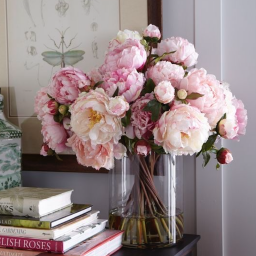Companion Planting: Sacrificial Plants

Whether deterring pests or adding nutrients, certain plants work well together. These plants will not only tolerate being planted next to, or near each other, they will actually benefit from the arrangement. The trick is to find out which make good bedfellows - and which do not. Learn some perfect partnerships for a healthy garden.
Comfrey can be made into ‘comfrey tea’ (it should be the color of cold tea when it’s ready to use), a liquid feed that benefits most flowering and fruiting plants. Comfrey is high in potassium, as its deep reaching roots can extract certain nutrients that shallower rooted plants, like strawberries, can’t get too. To make comfrey tea, just fill an old pillowcase with comfrey, tread on it a few times to bruise the leaves and stalks, then keep it submerged in a barrel of water until it smells terrible. This is when it’s ready to apply. I dilute the liquid 1:10 with water; it can also be used as a spray to perk up your plants if they get a little stressed in the summer heat (just don’t spray it on while they are in direct sunlight or you may scorch them).
Other good companion plants are varieties of mint, rosemary, lavender, thyme or any strongly scented herbs, the smell of which can deter or confuse pests, especially carrot fly, leek moth, aphids and whitefly. I like to plant my chosen herbs in old buckets, then I place them with my cauliflowers and cabbages, under the mesh that keeps cabbage white butterflies away. Every time I walk past, I give them a quick shake with my hand to release the gorgeous scent, deterring pests at the same time. I use regular spearmint (Mentha spicata), so I can also snip a few sprigs off the plant to give me a refreshing cup of mint tea while I’m wandering around the garden.
This species is great because it only grows between 12-36in (30-100cm), will grow in any soil, and can be hacked back without fear of killing the plant.

SACRIFICIAL PLANTS
When you are companion planting, it is also worth considering a few ‘sacrificial’ plants. These are plants that will attract pests to them, rather than to your crop. They can be specimens of the same crop that you are growing, or different plants entirely. By growing nasturtiums (Tropaeolum minus) around your cauliflowers and cabbages, you will encourage the cabbage white butterfly to lay its eggs on their leaves, instead of ruining your brassicas. Black fly is also attracted to nasturtiums, so they make ideal plants to grow around your broad beans, too. Once they are covered in insects, you can just pull up the nasturtiums and add them to the compost heap. And as an added bonus, the brightly colored flowers will attract a number of pollinators. They are not my only sacrificial plant, however. To prevent vine weevil from feasting on my container-grown rhododendron I pot up a few primroses (Primula vulgaris) in 4in pots, and place them around the main plant. As vine weevil larvae like to eat soft fleshy roots, the adults lay their eggs near the primrose, rather than the rhododendron. I keep checking the primroses for signs of ill health: when they start to wilt and the leaves fall off when tugged, I know the weevil larvae are in the pots and it is time to dispose of the plants and soil (if you have chickens, this makes an excellent, protein-rich snack for them).
Other plants can be made into bug sprays. By taking a handful of hot chillies, minced and added to water with a couple of drops of fairy liquid, you can create a good spray for keeping white fly at bay.
EASIER TARGETS
The chemical capsaicin, which creates the ‘heat’ in your mouth when you eat chillies, also irritates the insects, making them look for an easier target. Or try tomato leaf spray to deter aphids and mites. The alkaloids produced in the leaves of any ‘Nightshade’ family member will irritate and can kill the pests. Simply chop a couple of handfuls of leaves, steep them in 1 % pt (1 litre) ofwater for a week, strain, then use as desired. Ultimately, companion planting is not about controlling plants, it is about using their natural attributes to both the plants and your advantage. After all, who wants to fight nature when you can grow with it.
Some trusty rescue remedies

1. Mint (mentha)
This strongly scented herb helps to deter carrot fly, flea beetie, onion fly, aphids and black fly. It also makes a delicious and refreshing tea for when you are inspecting the garden on a warm summer morning.

2. Nettle
Nettles are key to the survival of butterflies as they are the primary food source for many caterpillars, including those of the comma, tortoiseshell and peacock. Give them nettles and keep your precious plants caterpillar-free.
Common nettles make a good plant food; just steep them in water until they become pungent, then water down 1:10. Use as a weekly feed for any non-flowering or fruiting plant such as lettuce, cauliflower and cabbage.

3. Garlic
Plant garlic throughout your plot and the smell will deter carrot fly and aphids. A garlic spray may control onion fly and help prevent peach leaf curl. But beware, if ' garlic is partnered with peas and beans their growth may become stunted.

4. Onion
Onion (Allium cepa) The scent of onions can deter aphids. Growing them alongside strawberries can help to prevent mouldy fruit. A spray made of boiled onions will control downy mildew. Planting lettuce with spring onions keeps slugs and snails at bay.
